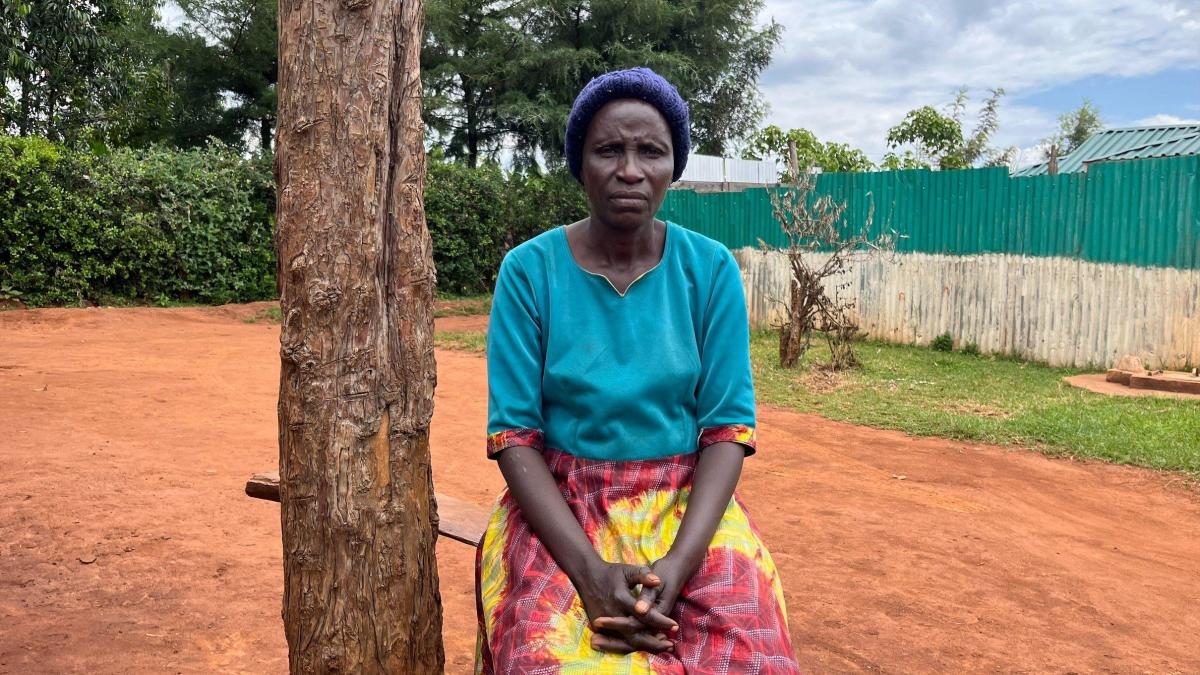The 2024 Olympics are shaping up to be the most competitive international men’s basketball tournament ever, with top nations including Canada, Australia, Spain, France, Germany and Serbia lining up for talent as they battle to defeat the USA team.
The U.S. men have won gold at each of the last four Olympics and have assembled “The Avengers” in hopes of doing so again. Led by LeBron James and Stephen Curry, Team USA is loaded with NBA All-Stars coached by NBA champions. But unlike many of the other teams they’ll face at the Olympics, this U.S. roster hadn’t played together in recent weeks until a series of warm-up games. And despite their considerable talent advantage, they’ll have less time than any other team to come together, put aside their NBA habits and play Fiba basketball, which has different rules, including smaller courts and shorter games, as a unit.
Meanwhile, the rest of the basketball world is closing the gap. And it’s only a matter of time before a surprise exposes the flawed process behind USA Basketball’s alien talent.
“We are seeing more and more NBA players [from other nations at the Olympics],” Team USA head coach Steve Kerr told The Guardian. “And what all of these teams have now is more and more talent to deal with the continuity that they have with these guys playing every summer, whereas our teams have tended to change.
“The challenge for us is to come together quickly as a team, because we are not used to playing together. We have to face the challenge that these other teams are getting better and better every year.”
Unlike other basketball nations, where players grow up together in the same ecosystem, play for the same youth clubs and graduate to the same professional teams while regularly representing their country in international competition, American basketball is fragmented. Due to the geography of the country and the nature of youth basketball in the U.S., the best young Americans rarely play together and have a limited understanding of international basketball, often prioritizing youth tournaments or college visits over the national team.
Related: Steph Curry praises Kamala Harris, hopes US Olympic team can unite divided country
“It’s always a challenge to build a team quickly and specifically develop the continuity, the trust and the connectivity,” USA assistant coach Erik Spoelstra said. “Luckily, we have a program that’s been built over the last 20 years, and a lot of the players are already in the program — and that’s important.”
At the 2004 Olympic Games in Athens, the U.S. won bronze, marking the first time an all-NBA American team failed to win gold at the Games. That was when former program director Jerry Colangelo and head coach Mike Krzyzewski asked players to commit to a three-year contract with the national team, resulting in the Redeem Team winning gold at the 2008 Games.
When Grant Hill took over the program in 2021, however, he took a different approach: athletes no longer had to commit to the Olympics for multiple years. It was a sign of the times, with star athletes possessing more strength than ever before, but also being aware of their bodies in the age of load management.
So while it’s true that many of this U.S. Olympic team played for their country at the youth level—and that players like James and Kevin Durant have won multiple Olympic golds—their continuity pales in comparison to other teams. After all, only two of the U.S. squad for Paris were on last summer’s World Cup team, while Curry hasn’t played internationally since 2014, and recently naturalized U.S. citizen Joel Embiid has never played an international game in his life.
Meanwhile, the core players of Spain, Serbia, Australia and France have been together for almost a decade, while Germany and Canada signed three-year commitments from their NBA rosters ahead of the 2024 Games in Paris.
“Teams have been together for the last six to seven years, that’s what it felt like,” Durant said. “A lot of these guys played together at amateur programs all the way to pros. And that’s not the formula that we have here in the United States. But we have the athleticism, the size, the size, the IQ, and when you put all that on the floor with great coaching, you know, I think the chemistry is going to grow pretty quickly.”
Team USA won their five Olympic warm-up games despite having less practice time than their opponents and without an injured Durant, their all-time leading scorer. However, they trailed most of the game against the world’s 33rd-ranked nation, South Sudan, and battled 101-100 after James scored a late game-winner. They needed another round of James’ heroics to see Germany, although that was less of a shock since the Germans are the reigning world champions. Of course, this version of Team USA has all the talent, versatility and depth they need to win gold in Paris, with perhaps the best collection of athletes since the 1992 Dream Team. But their best players are getting older, with Embiid admitting that “the talent that’s on the USA team, you also have to understand that most of those guys are older. The LeBron of today is not the LeBron of a few years ago. I think people get fooled by the names on paper. But those names have been built up over their careers, and now they’re older. They’re not what they used to be.”
Embiid’s point is that the biggest problem facing USA Basketball’s future is the lack of young American superstars. After surviving on the backs of generational players like James, who turns 40 in December, Durant, and Curry, who are in their mid-30s and will no longer be in the program by LA 2028, Team USA has few clear replacements to lead future teams. The goal, of course, is to pass the torch to holdovers like Anthony Edwards, Devin Booker and Tyrese Haliburton, who will likely be joined by the likes of Chet Holmgren, Paolo Banchero and Cooper Flagg. But how many of those players project as generational stars? After all, the last American-bred MVP was James Harden in 2017-18, and the top four NBA MVP voters last season were all international players.
In the absence of obvious replacements, USA Basketball would be wise to develop a long-term development system that combines continuity with talent, just like the rest of the world. Instead, they built this Olympic roster by skipping tryouts and selecting who they deemed the 12 best players for the competition, even going so far as to make a marketing spectacle out of it. That plan has already proven flawed, however, as Kawhi Leonard was replaced by Derrick White a few days into training camp.
That’s not the only questionable roster decision USA Basketball has made in recent years. Last summer’s World Cup roster featured Utah Jazz rookie Walker Kessler as center, who struggled so much that he became perhaps the first player to transfer from Team USA to the NBA Summer League a year later. And the same goes for last World Cup, where Team USA was left with a second-rate roster after many of its best players withdrew from the competition before training camp.
Part of the problem is that Americans no longer see the benefit of representing their country outside of the Olympics, where they’re expected to win but criticized if they don’t. And according to reigning NBA Finals MVP Jaylen Brown, the other problem with the federation’s roster has to do with shoe company politics. Brown argued that he was left off the Olympic roster because he’s not affiliated with Nike, the major sponsor of USA Basketball.
But whether it’s shoe company politics, a lack of interest or tryouts, or limited play under Fiba rules, the cracks in USA Basketball’s superteam model are beginning to show. After winning gold at the 2010 and 2014 World Cups in a streak that included a 58-game winning streak in Fiba and Olympic competition, Team USA finished seventh in 2019 and fourth in 2023. They also finished behind Canada in America’s qualification for the last two World Cups and have won the Fiba AmeriCup just once since 2007.
“The best talent is not just in the U.S.,” says Canadian Lu Dort of his experience playing international basketball. “There are guys from all over the world who can compete and play this game.”
Shai Gilgeous-Alexander, an NBA All-Star and Canada’s best player, agrees. “The world is getting really good at basketball, basketball is getting bigger,” he says. “That’s what the game deserves. It’s a great game. We all love it. That’s why it’s going where it’s going.”
International basketball is growing, and as a result, the gap between the U.S. and the court is closing. Countries like Canada and Australia combine NBA rosters with Fiba experience, Greece and Serbia have two of the best players in the world, while France has a youth movement led by Victor Wembanyama who seems destined to become the best player in the world in the coming years. Meanwhile, America’s talent pool is not what it once was compared to the rest of the world—a result of the lackluster youth basketball development infrastructure in the U.S. compared to the successful club systems across Europe, which emphasize ball movement from an early age rather than pushing their best players.
The U.S. has ruled basketball since the game was invented. But it won’t stay that way forever. Of course, the States will continue to produce the most NBA players because of its population and resources. But it’s only a matter of time before Team USA pulls off a surprise similar to the one in Athens in 2004. And since the federation selects a brand-new superteam every four years rather than adopting a more sustainable team-building model, that surprise could happen as early as this summer.
“People have a legitimate fear of us, you know? They give us respect without giving us any respect,” said Team USA forward Bam Adebeyo.[Regardless of] how everyone feels, you have to go out there and win. You can’t win the game just on paper.”







